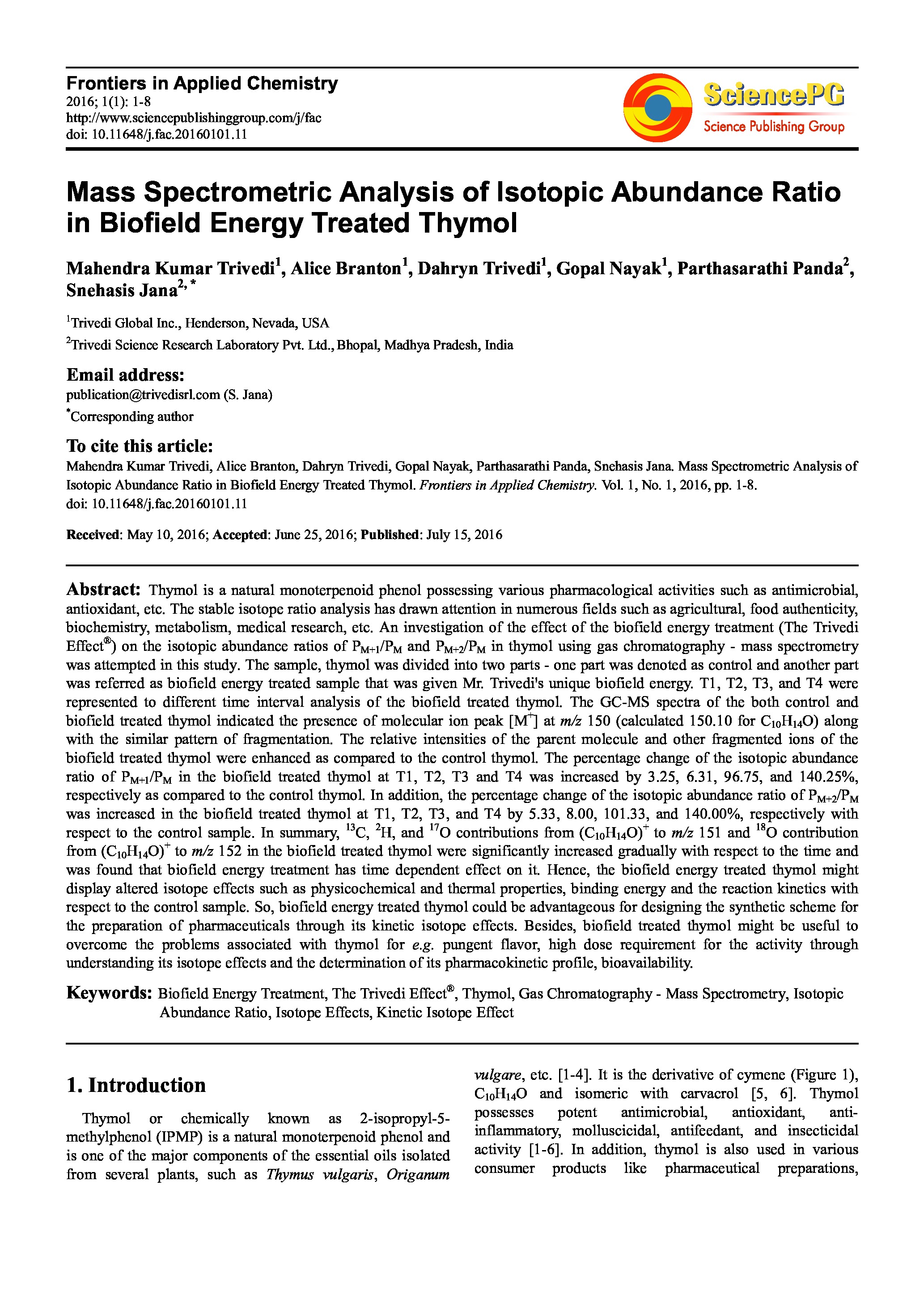Mass Spectrometric Analysis of Isotopic Abundance Ratio in Biofield Energy Treated Thymol
Affiliation
Trivedi Global Inc.; Trivedi Science Research Laboratory Pvt. Ltd.
Main category
Natural Sciences (Analytical Chemistry, Method Development (Chemistr)
Abstract
Thymol is a natural monoterpenoid phenol possessing various pharmacological activities such as antimicrobial, antioxidant, etc. The stable isotope ratio analysis has drawn attention in numerous fields such as agricultural, food authenticity, biochemistry, metabolism, medical research, etc. An investigation of the effect of the biofield energy treatment (The Trivedi Effect®) on the isotopic abundance ratios of PM+1/PM and PM+2/PM in thymol using gas chromatography - mass spectrometry was attempted in this study. The sample, thymol was divided into two parts - one part was denoted as control and another part was referred as biofield energy treated sample that was given Mr. Trivediꞌs unique biofield energy. T1, T2, T3, and T4 were represented to different time interval analysis of the biofield treated thymol. The GC-MS spectra of the both control and biofield treated thymol indicated the presence of molecular ion peak [M+] at m/z 150 (calculated 150.10 for C10H14O) along with the similar pattern of fragmentation. The relative intensities of the parent molecule and other fragmented ions of the biofield treated thymol were enhanced as compared to the control thymol. The percentage change of the isotopic abundance ratio of PM+1/PM in the biofield treated thymol at T1, T2, T3 and T4 was increased by 3.25, 6.31, 96.75, and 140.25%, respectively as compared to the control thymol. In addition, the percentage change of the isotopic abundance ratio of PM+2/PM was increased in the biofield treated thymol at T1, T2, T3, and T4 by 5.33, 8.00, 101.33, and 140.00%, respectively with respect to the control sample. In summary, 13C, 2H, and 17O contributions from (C10H14O)+ to m/z 151 and 18O contribution from (C10H14O)+ to m/z 152 in the biofield treated thymol were significantly increased gradually with respect to the time and was found that biofield energy treatment has time dependent effect on it. Hence, the biofield energy treated thymol might display altered isotope effects such as physicochemical and thermal properties, binding energy and the reaction kinetics with respect to the control sample. So, biofield energy treated thymol could be advantageous for designing the synthetic scheme for the preparation of pharmaceuticals through its kinetic isotope effects. Besides, biofield treated thymol might be useful to overcome the problems associated with thymol for e.g. pungent flavor, high dose requirement for the activity through understanding its isotope effects and the determination of its pharmacokinetic profile, bioavailability.
DOI
10.18147/smn.2017/paper:494
Do you have problems viewing the pdf-file? Download paper
here
If the paper contains inappropriate content, please
report the paper. You will be redirected to the landing page.
